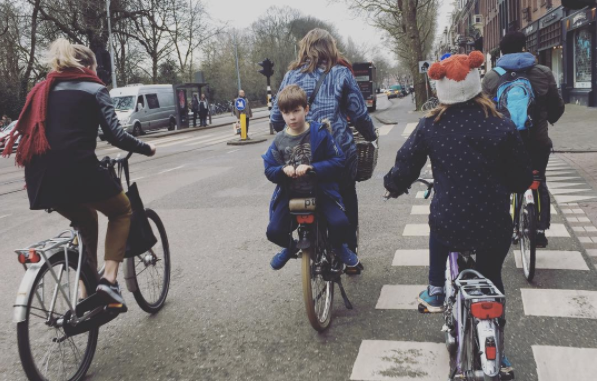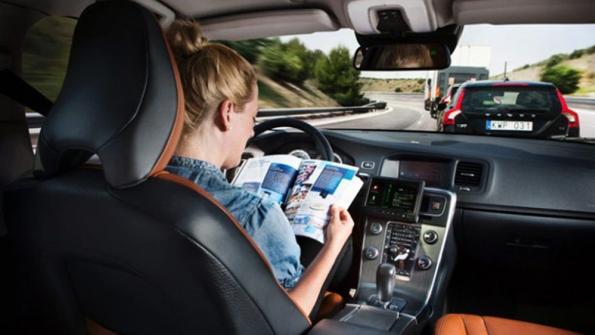
DCA Blog by Marco te Brömmelstroet, Associate Professor in Urban Planning at University of Amsterdam. Based on an article written together with Anna Nikolaeva, Meredith Glaser, Morten Skou Nicolaisen and Carmen Chan. For the full article with all references and details, please follow this link.
For a documentary about the meaning of cycling, we asked random Dutch cyclists on the street to share their thoughts. At first, most were tongue-tied, but after some more prompts, all kinds of interesting experiences came out. Most of these included meeting other people; colleagues, friends, family or random fellow citizens. These anecdotes were rich with details about the weather, locations, sounds and even smells. What do such anecdotes tell us and is their quality properly addressed in how we think and act in the field of mobility?
From disutility to valuable exposure
New insights from lifelogging research suggest that people who are more socially connected to family, to friends, to communities are happier, healthier and live longer. Furthermore, our feeling of being connected to a certain place and society also relates to the efficacy and functioning of communities as a whole. While exposure to diversity does not necessarily lead to a greater sense of connectedness, we can at least say that non-exposure – cocooning – almost certainly blocks opportunities to come closer to each other.
In mainstream transport planning, mobility is often understood as a cost that needs to be minimized; a disutility in economic terms. We evaluate transport interventions in terms of how much “travel time savings” they offer. This puts our focus on all kinds of policies and innovations that either shorten our travel time (think: speeding up traffic, solving congestion) or make us use this time more productively (think: self driving vehicles that make working/leisure possible).
This implicit and explicit professional language blinds us for the above mentioned potential exposure to social and spatial diversity. The car, public transport, walking and cycling offer radically different stages to interact, especially with people outside one’s own social network and with the physical environment. What do different mobility practices do for the quality of relations between people as well as between them and their surroundings?
Multisensory trips through space
Leaving your door, you enter the public realm, where you are exposed to social relations going beyond our own circle of friendships, and of family and professional relations. This is the place where society is formed.
During our daily mobility, we socialize or seek solitude, negotiate our identity and perform a range of social roles; through mobility we can contest power relationships and claim our rights to participate in society or are excluded and ignored. The embodied nature of being mobile and its sensorial and affective dimensions are central in people’s mobility choices and experiences. As such, mobility is not individualistic and disconnected, as so often suggested in mainstream transport planning.
The act of passing through different territories allows us to see, hear, smell, taste, and feel the city and its features. On a bicycle or walking, the body stores the city in a kinaesthetic map. We share all these multisensory physical experiences with others in time and space. This contributes to our level of understanding of our common spatial and social environment. And shape it at the same time.
Observed differences between modes
In light of the above, we can make the following generic observations:
Cars primarily offer solitary mobility experiences in which social interaction, beyond those inside the same vehicle, is limited to brief encounters through the reflective glass of a car windshield or windows. Such separation limits the contact and sensory potential of its users: sights, sounds, tastes, temperatures and smells of the city are reduced to the two-dimensional view through the car windscreen. The even higher potential of disengagement that is often praised in the self-driving car would even strengthen this.

Public transport has similar cocoon-like features as the car without the need for active driving. Attention can be focused on personal activities, but also on interaction, both socially and spatially (when looking outside is possible). It provide more potential to engage in deep conversations with “strangers” around you or just observe interactions of others, getting a glimpse of social worlds you are unfamiliar with. Getting in and out also creates a more bodily choreography with others.
Cycling allows the user to explore their spatial surroundings and offers continuous negotiation with others and one’s surroundings. Differences in cycling postures and physical requirements naturally influence this potential. Cyclists are structurally very open for interaction as all their senses are exposed and they are not visually or physically shielded in any way. Interactions can be positive, neutral, negative and even aggressive. Cycling also offers high potential of being exposed to spatial and social diversity, partly because it allows to cover large areas of the city, and experience its similarities and differences.
Walking heightens opportunities for spontaneous bumping into, where such brief (seemingly trivial) conversations can help to encourage a sense of trust and a sense of connection between people and the places they live. Similarly, walking immerses the pedestrian into the sensescapes of the surrounding physical environment, inviting them to fully experience place.
Conclusions
Being connected to people and places means moving around, exploring, using all our senses and interacting. Through each mobility mode, we develop a unique way of knowing our social and spatial environments, limited in some respects, rich in others.
On a personal level, there is not one mode of traveling that trumps all others. Instead, a rich understanding of the social and spatial context emerges from using many different modes and using them to their full potential.
To further investigate if such exposure matters, varies and correlates with the feeling of being connected to communities and places, we should link the hypotheses developed in this article with operationalisations of effects on (the feeling of) connectedness such as sense of community, social trust, collective efficacy, participation and aspects of neighbouring.

You must be logged in to post a comment.